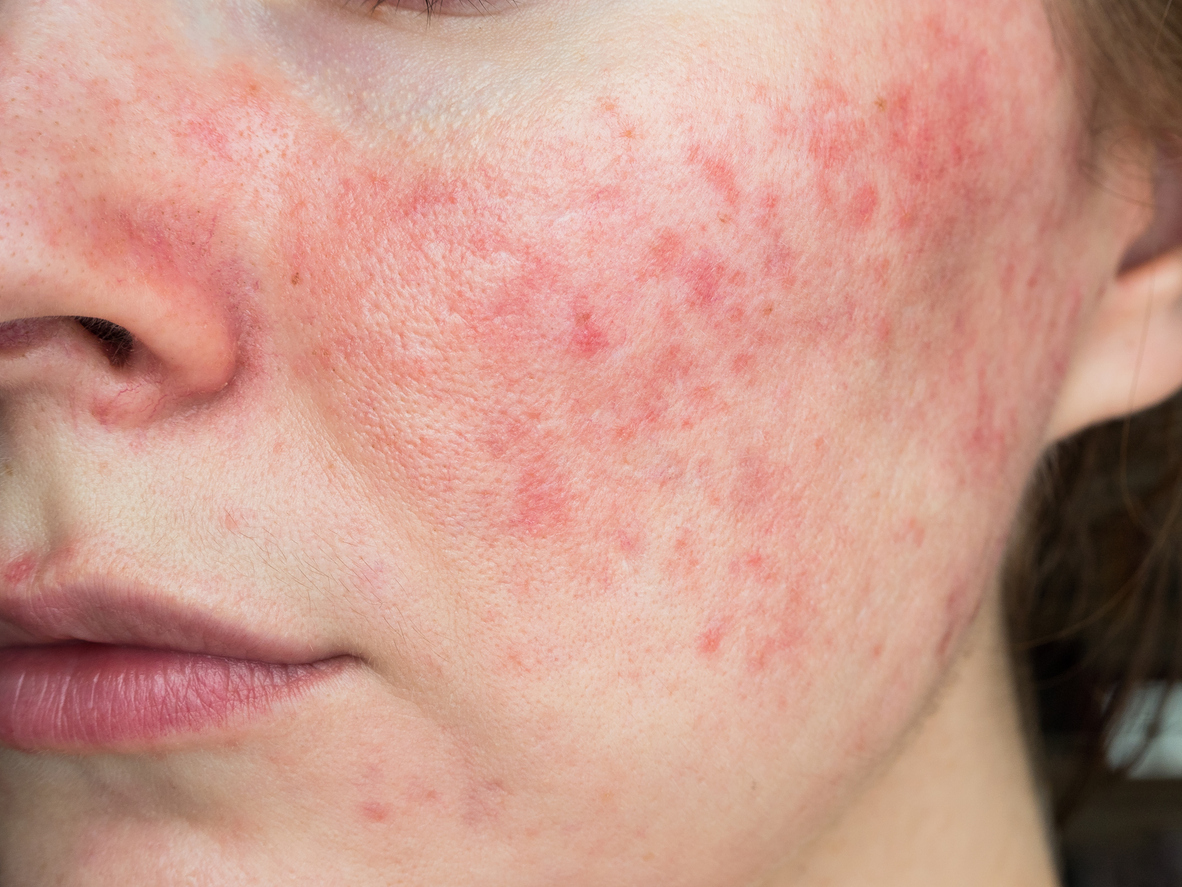While the exact cause of rosacea isn’t fully understood, several factors are known to play a role in how it develops:
Everyone’s experience with rosacea is different, so identifying and avoiding personal triggers is an important part of managing it.
Type 1: Flushing & Redness
The mildest form, marked by visible capillaries, sensitive skin, and redness triggered by sunlight, spicy food, or skincare products. Burning or stinging is common.
Type 2: Papular Rosacea
Persistent redness with acne-like bumps and pustules. Inflammation often makes the redness appear more intense.
Type 3: Ocular Rosacea
Affects the eyes, causing dryness, redness, and a gritty feeling. Eyelids may become red and scaly, needing specific care.
Type 4: Skin Thickening (Rhinophyma)
An advanced form where skin—especially on the nose—thickens and swells due to enlarged oil glands.

(Available on Excel V and Excel V Plus)
Best for
Mild cases or isolated vessels.
How It Works
The long-pulse Nd:YAG laser emits energy at a wavelength absorbed by haemoglobin in blood vessels. This heat causes the targeted vessels to collapse, effectively treating both surface red veins and deeper blue veins.
Results
Treated vessels may disappear immediately or gradually fade over several weeks.
(Candela VBeam Perfecta, Excel V, Excel V Plus, Sciton BBL)
Best for
More severe cases or large areas of visible facial veins and redness, particularly in rosacea.
How It Works
This approach layers multiple vascular-targeting technologies in one session, including:
Results
Effectively reduces visible veins, diffuse redness, and facial flushing commonly seen in rosacea.
(Candela VBeam Perfecta, Excel V, Excel V Plus, Sciton BBL)
Best for
Stimulating collagen and vascular remodelling to reduce persistent skin redness.
How It Works
Often recommended in combination with vascular laser or BBL treatments to enhance skin healing, texture, and redness reduction.

While the exact cause of rosacea isn’t fully understood, several factors are thought to play a role:

Rosacea often begins with intermittent flushing but may gradually lead to more persistent and visible redness. As rosacea progresses, the skin can become increasingly sensitive and prone to reacting to skincare products, environmental shifts, or even diet and emotional stress. Without proper management, small visible blood vessels (telangiectasia) and acne-like bumps may develop. In some advanced cases, particularly in men, rosacea can lead to thickening of the skin on the nose, a condition known as rhinophyma.

A number of lifestyle and dietary habits can aggravate facial redness and trigger flushing episodes. These include:

A suitable routine for rosacea and redness-prone skin should prioritise gentle, barrier-strengthening products that soothe inflammation. Key recommendations include:

Several advanced treatments are available to help reduce the redness, flushing, and sensitivity associated with rosacea:

Topical treatments formulated for rosacea can be helpful, but products aimed at controlling redness and flushing may sometimes irritate sensitive skin and cause rebound flushing. To minimise this risk:

Caring for reactive skin requires a cautious approach. It's essential to: